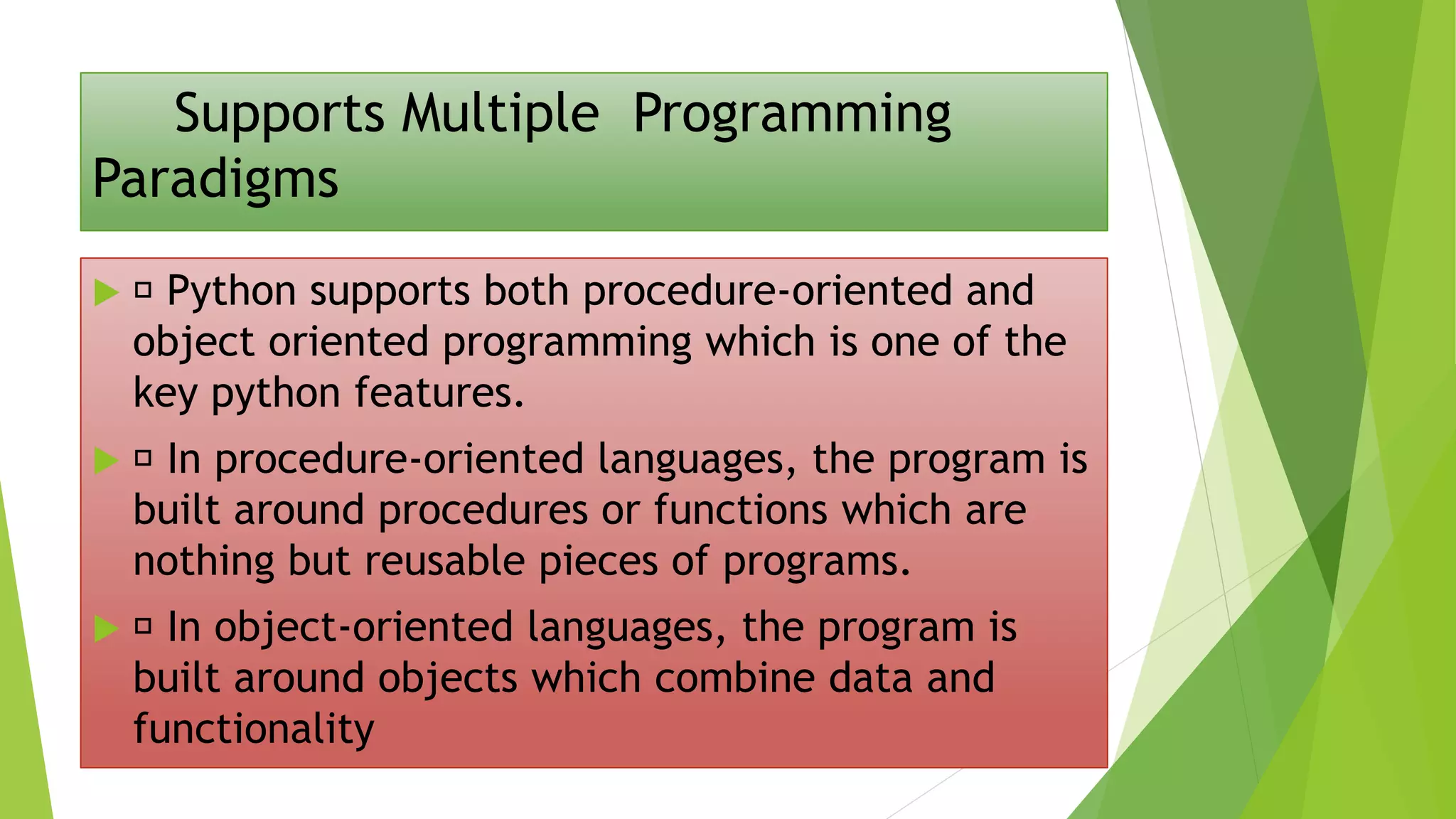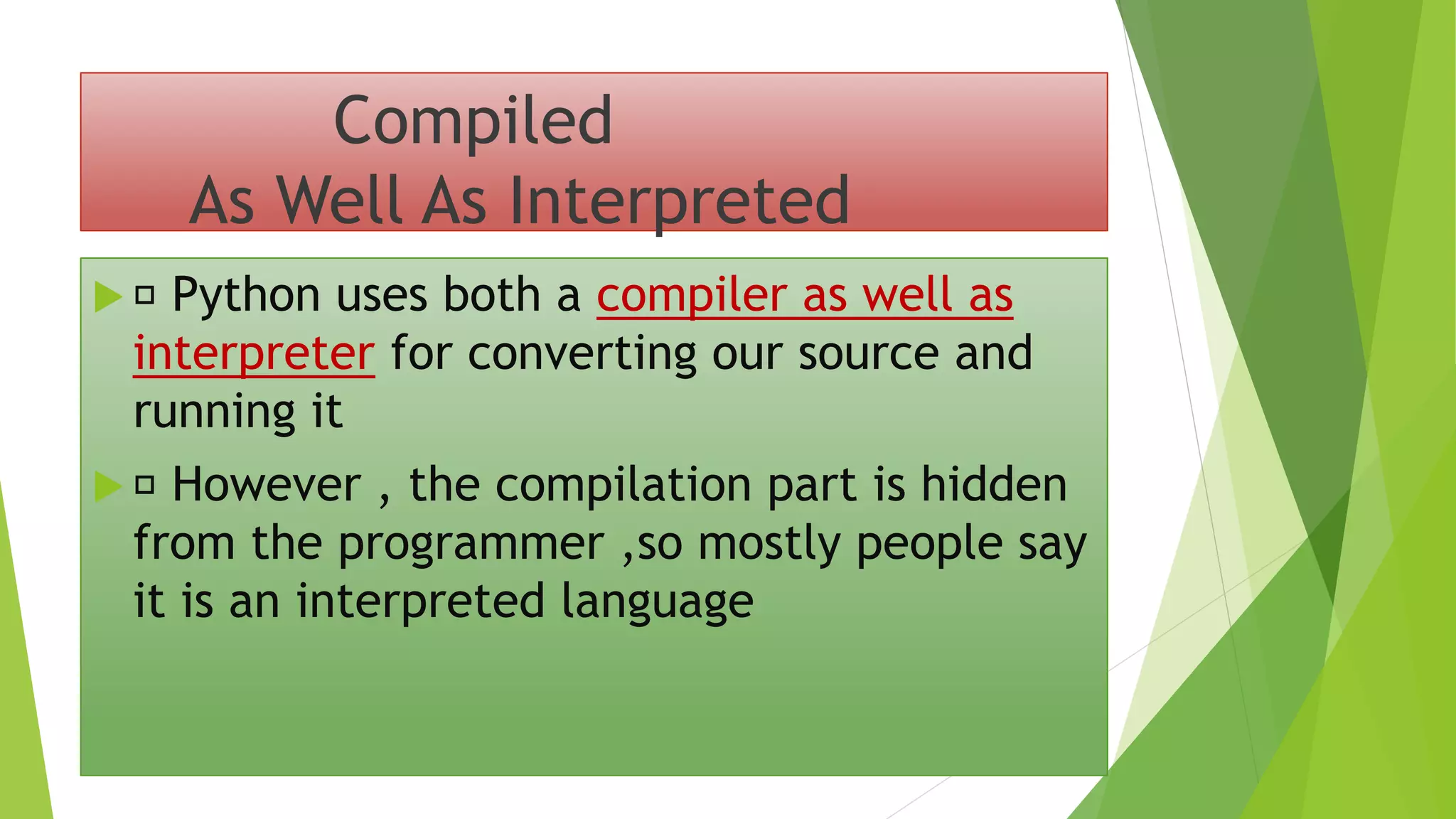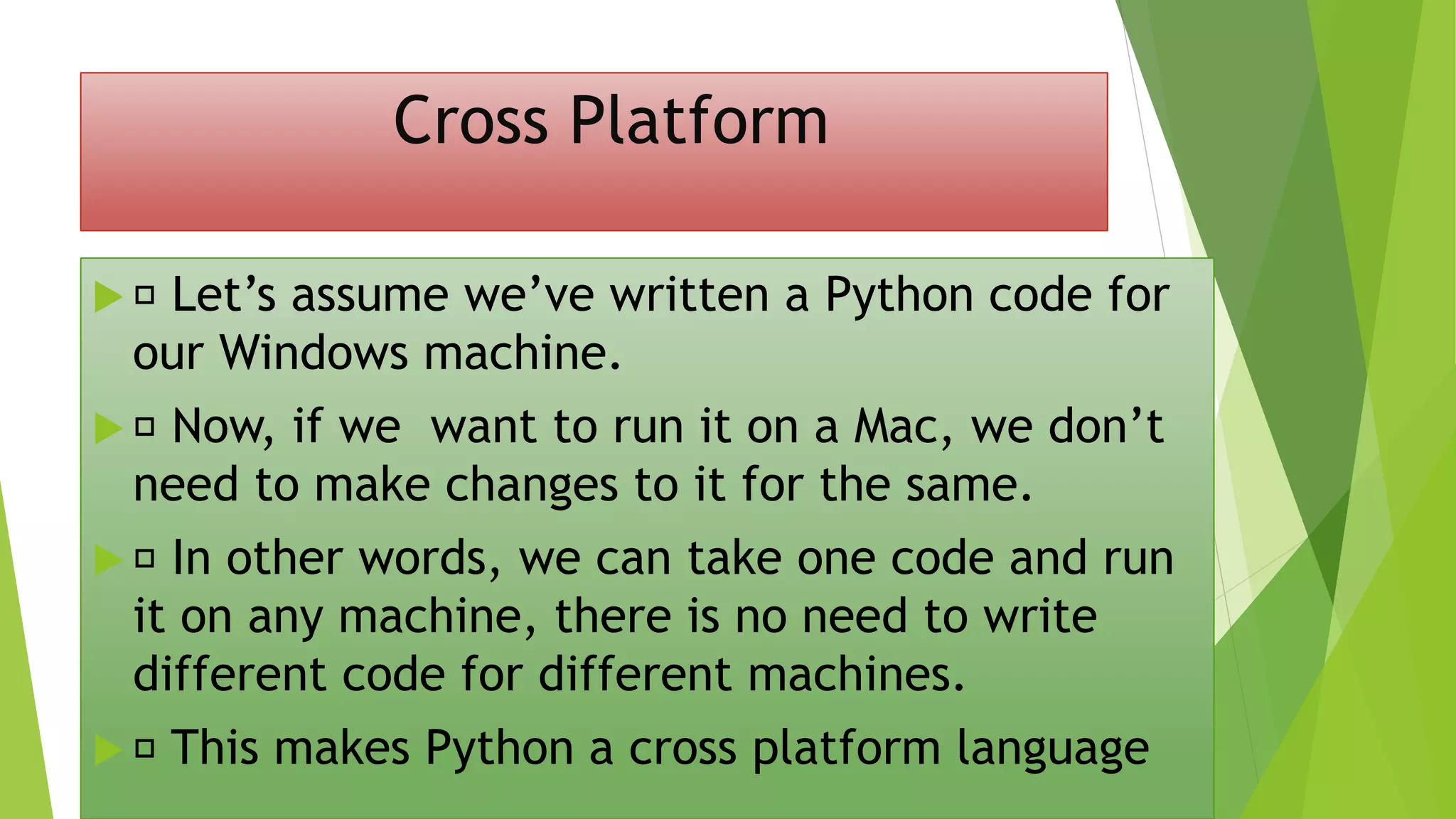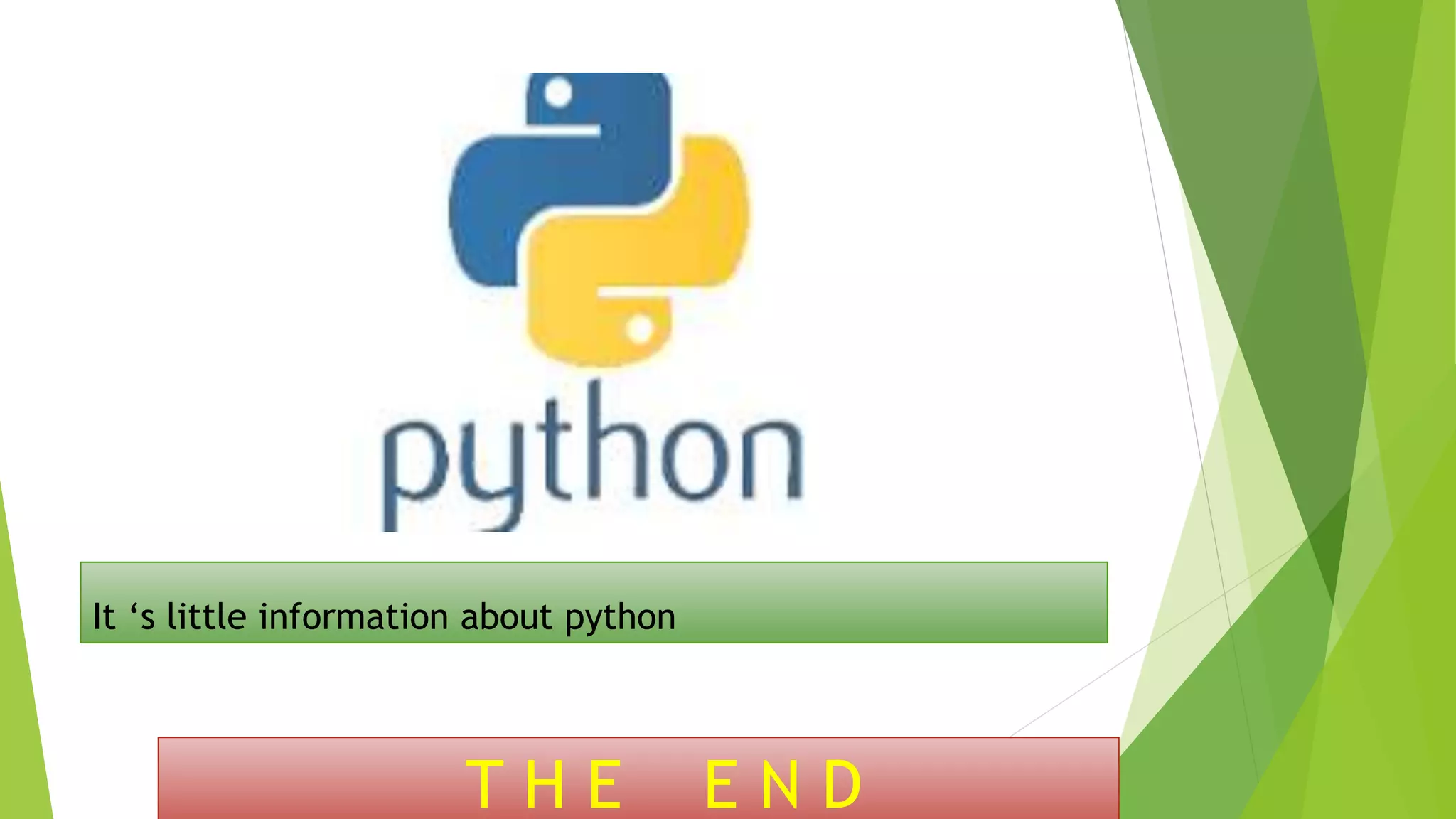Python is a versatile programming language created by Guido van Rossum in 1989. It can be used to build a wide range of applications, including desktop GUIs, web applications, data analysis, machine learning, and games. Python code is often simpler and more readable than other languages like C++ and Java due to its clear syntax and dynamic typing. It supports both procedural and object-oriented programming, and can be compiled as well as interpreted, running on many platforms.
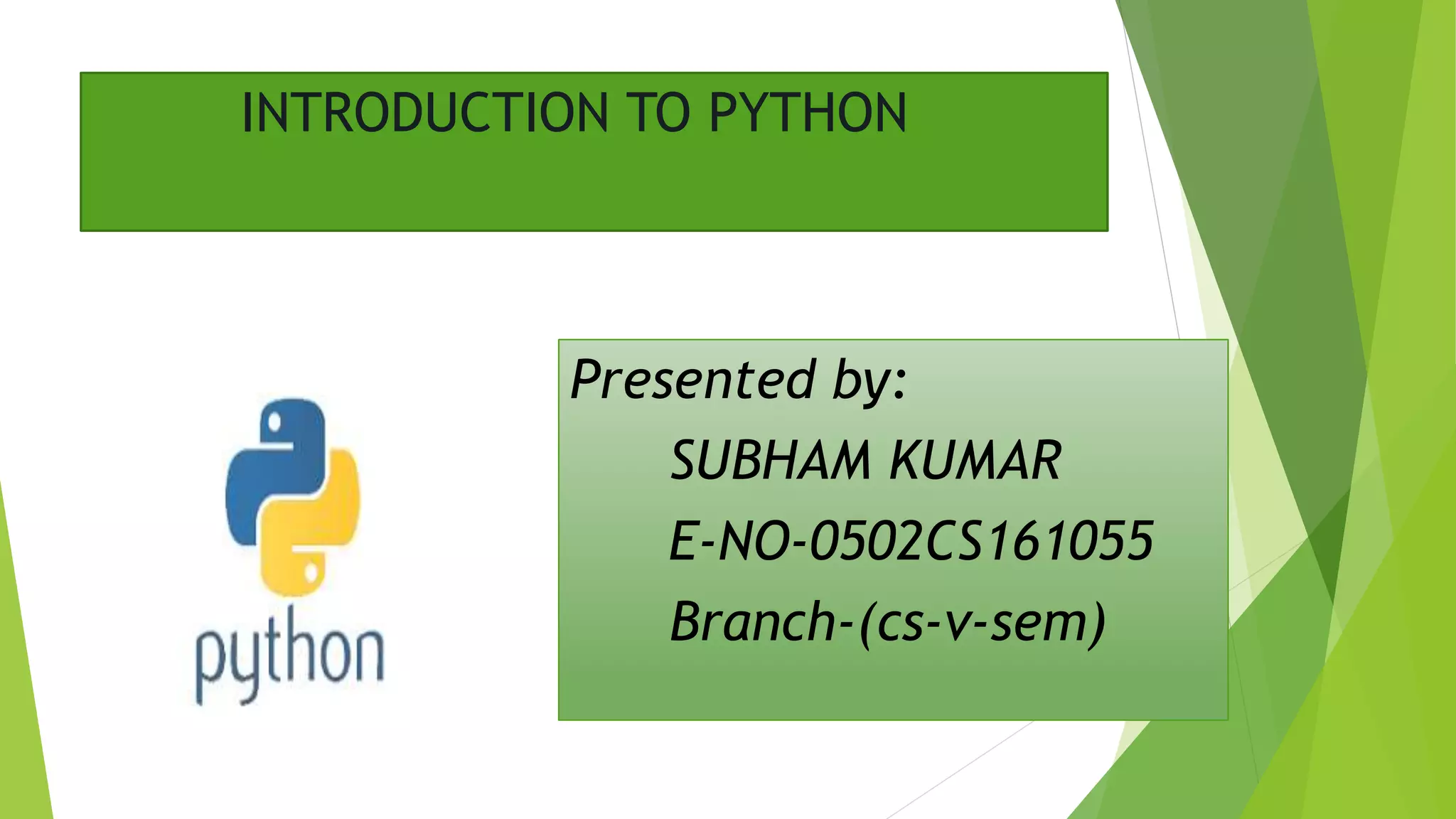
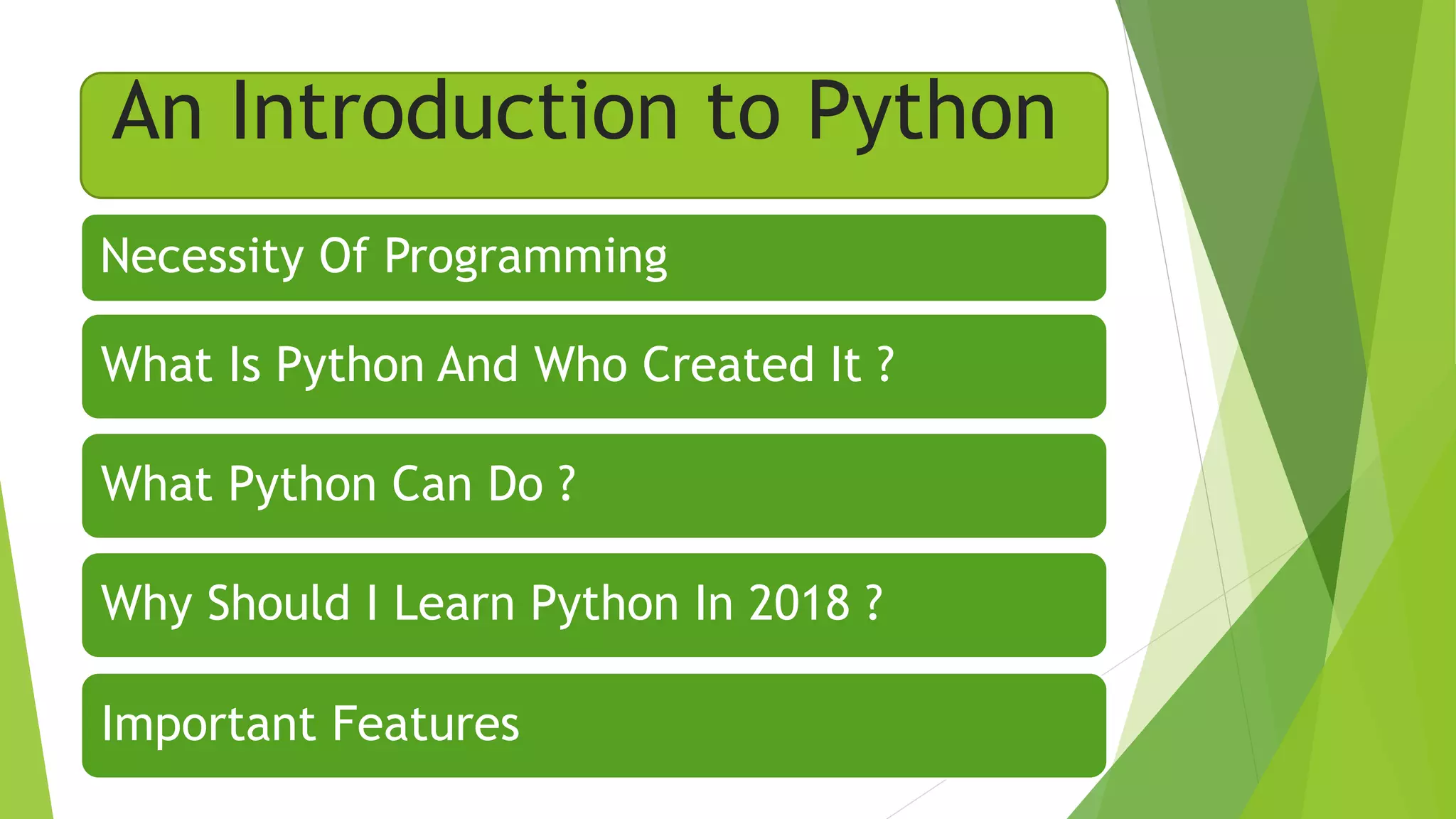
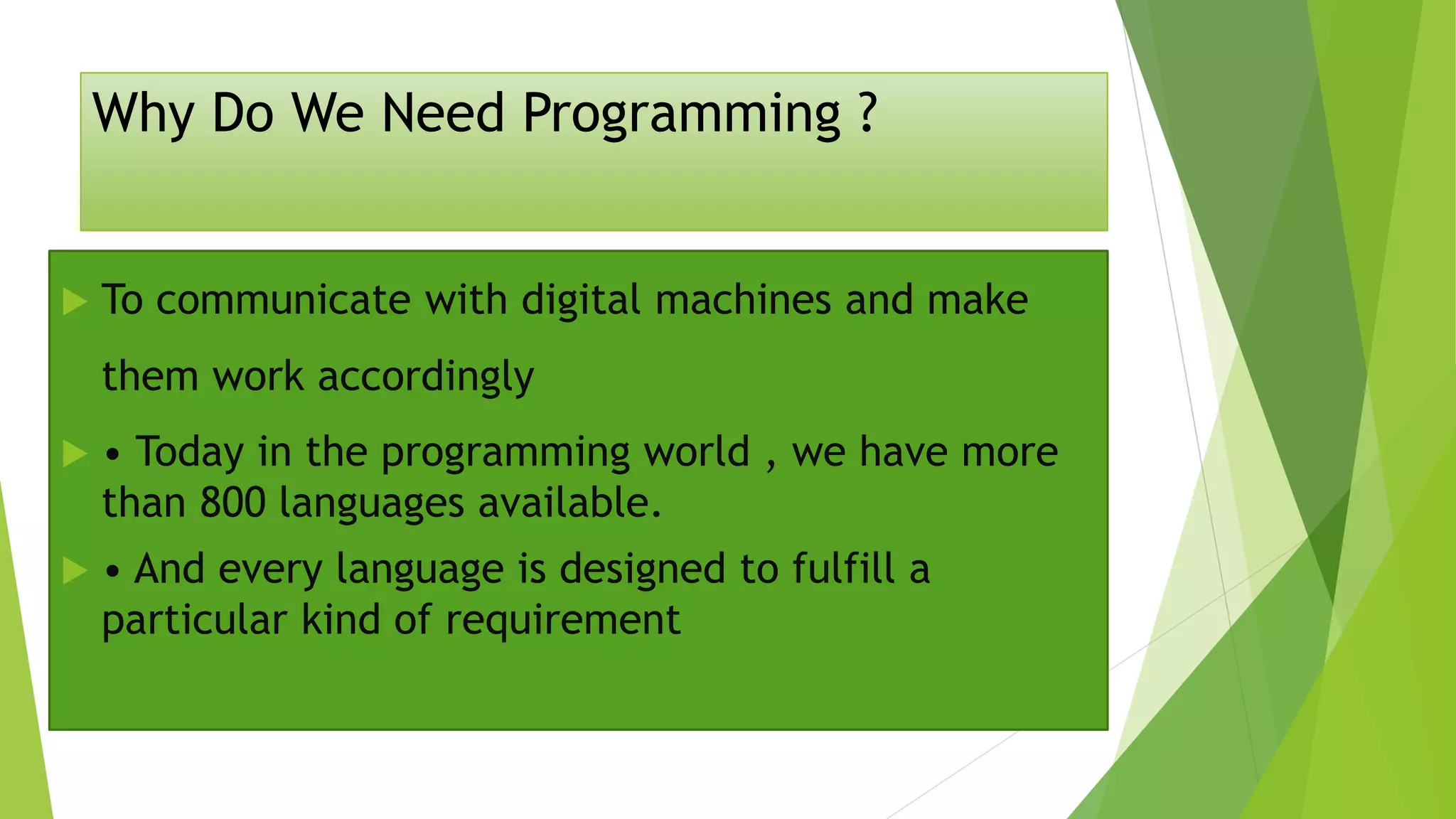
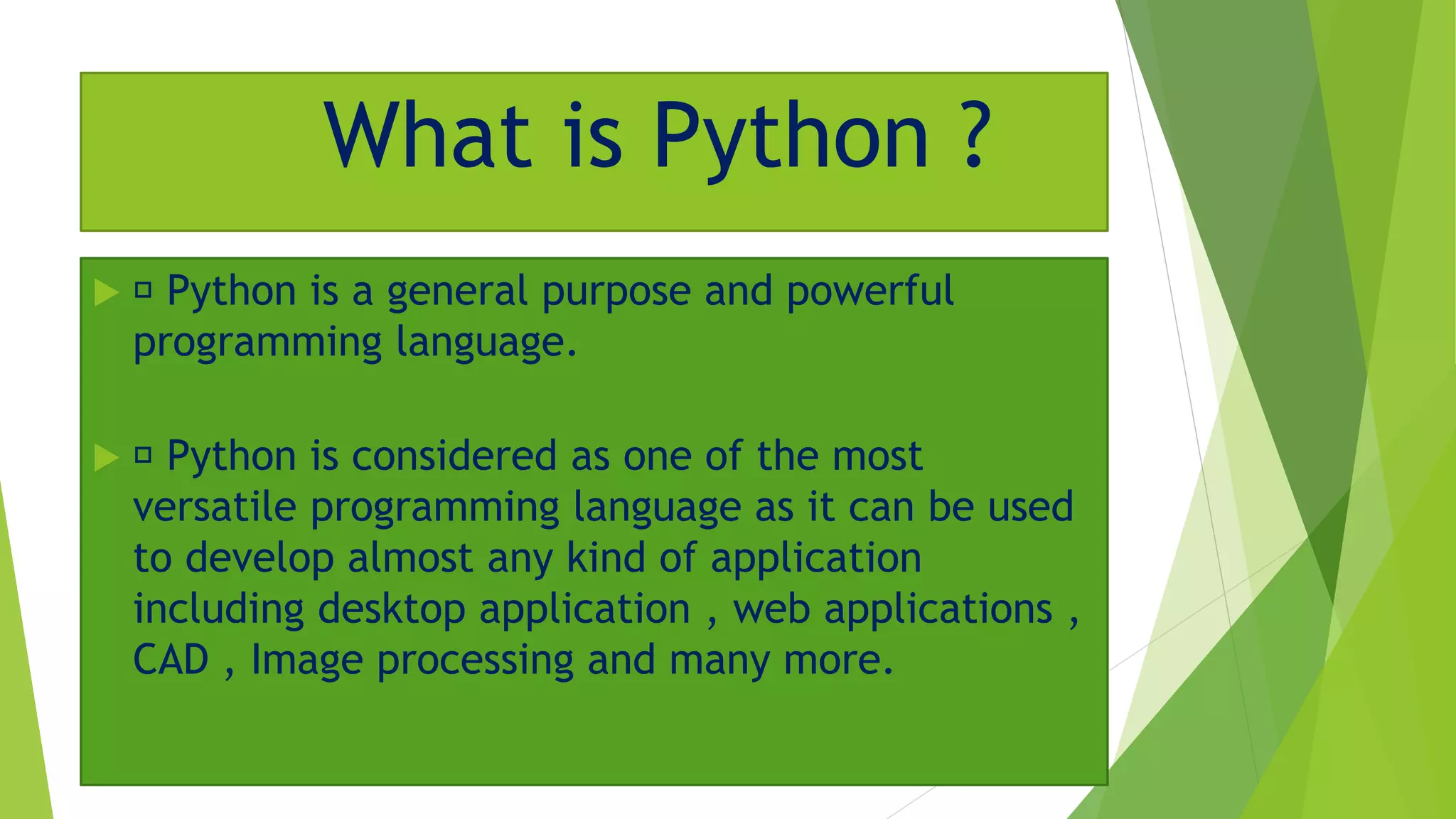
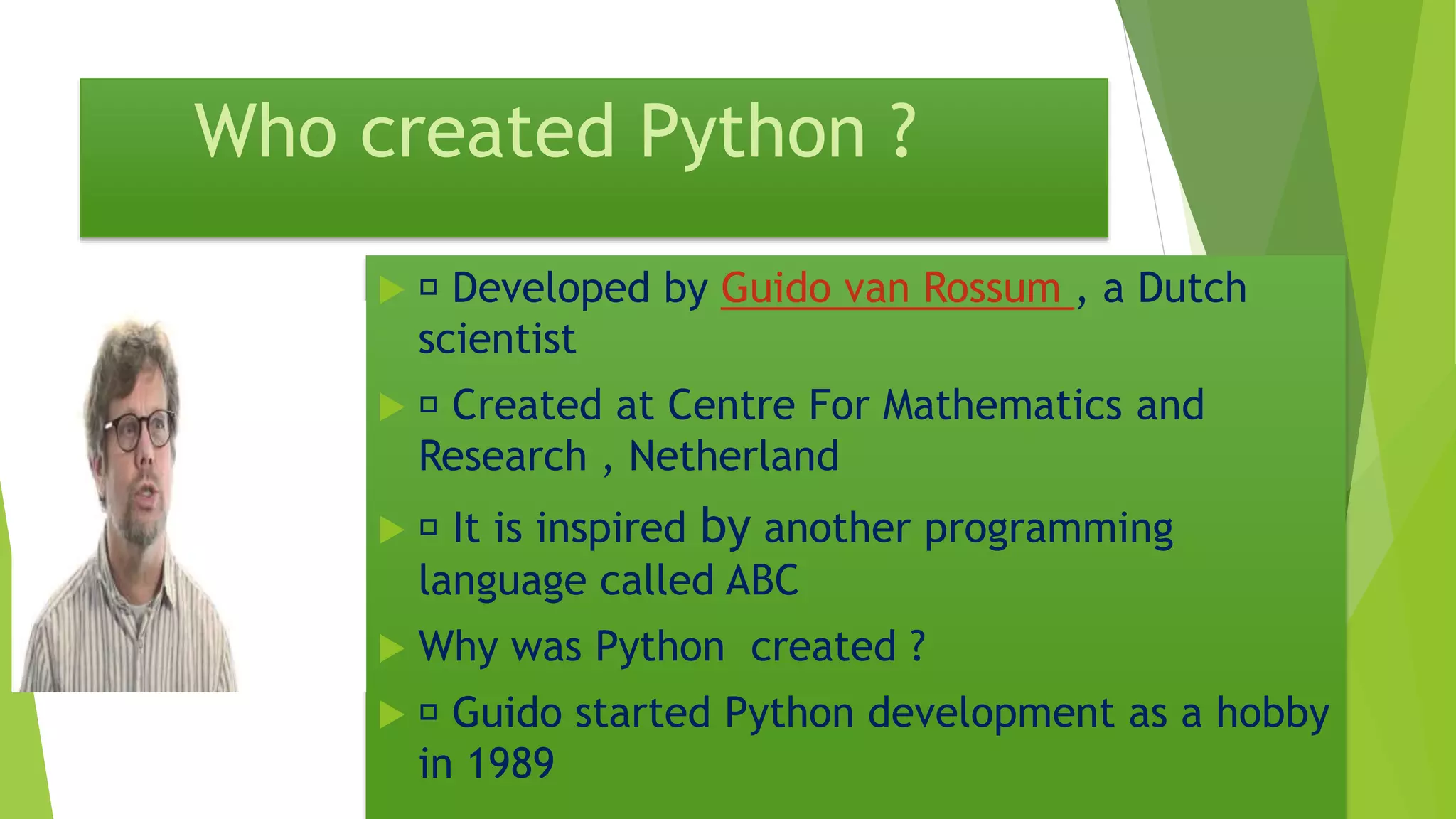

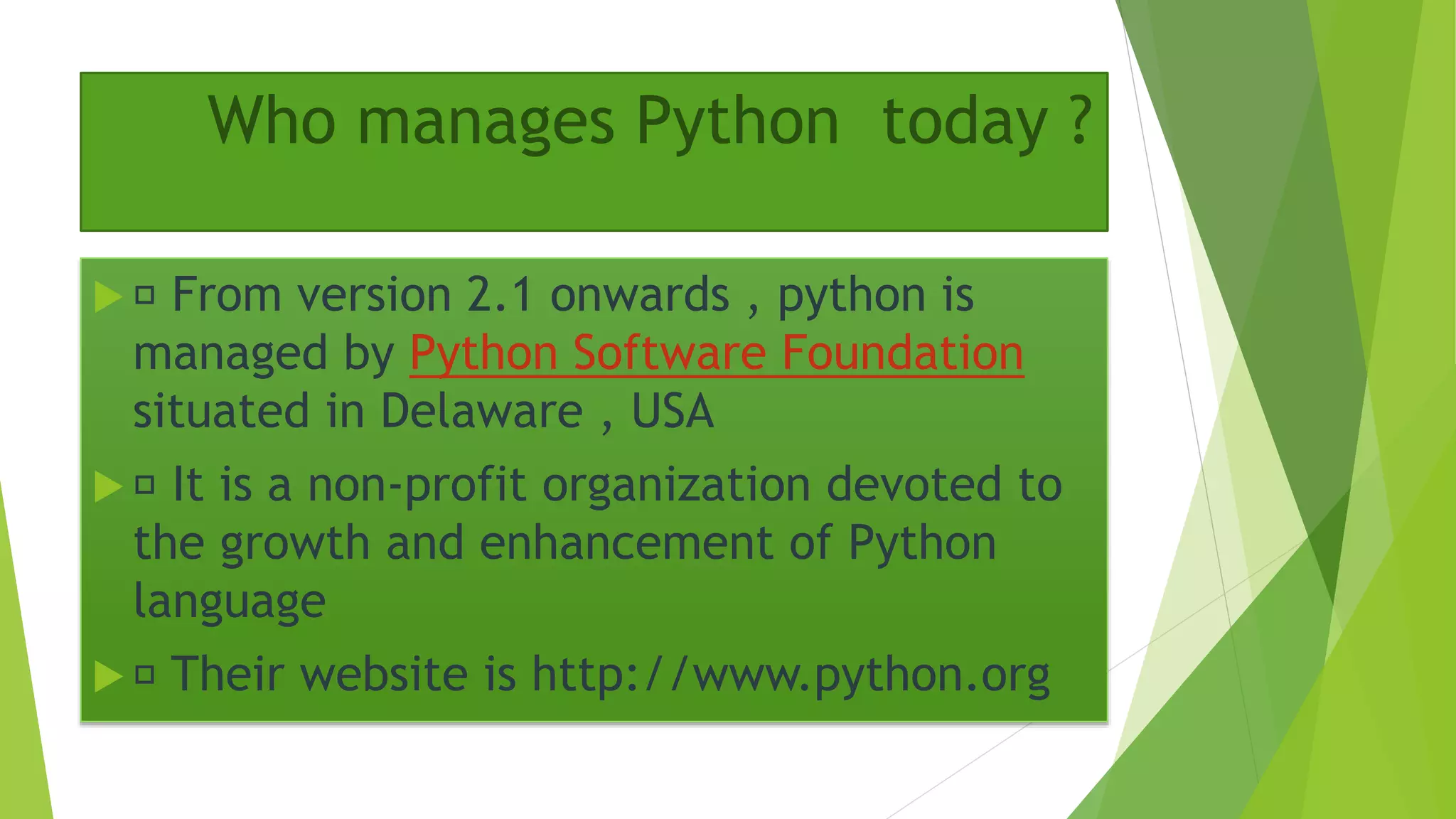
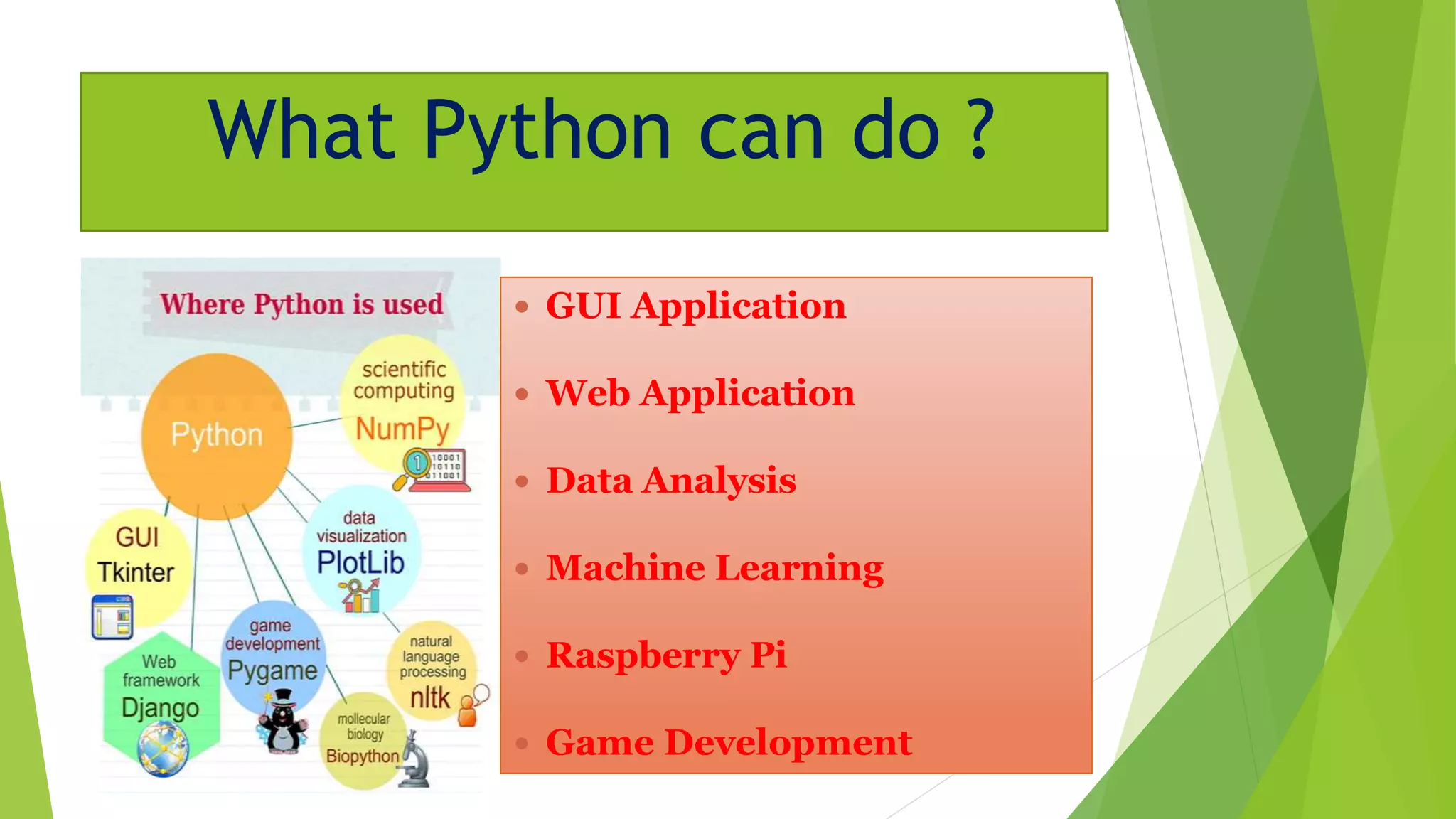
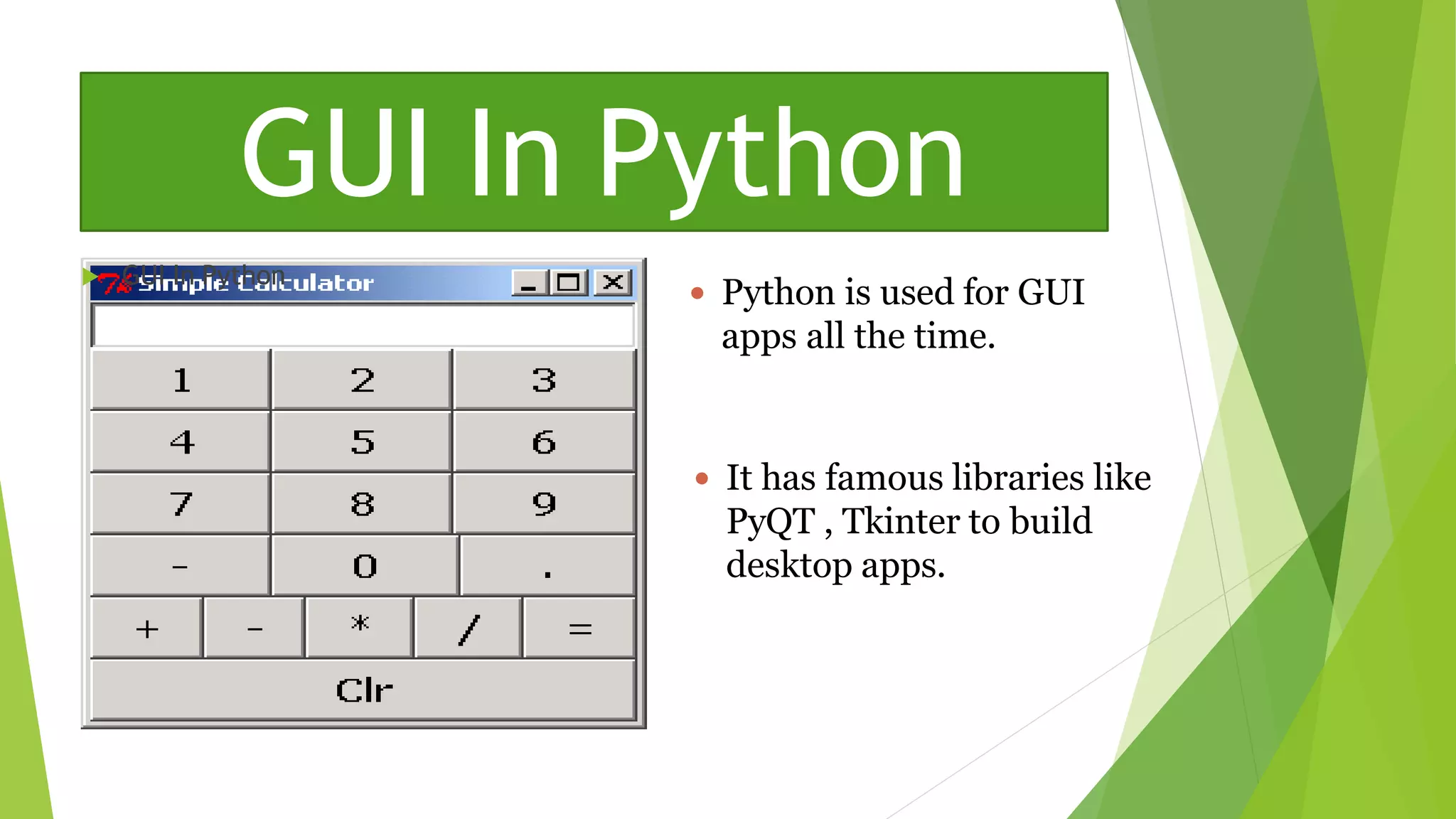
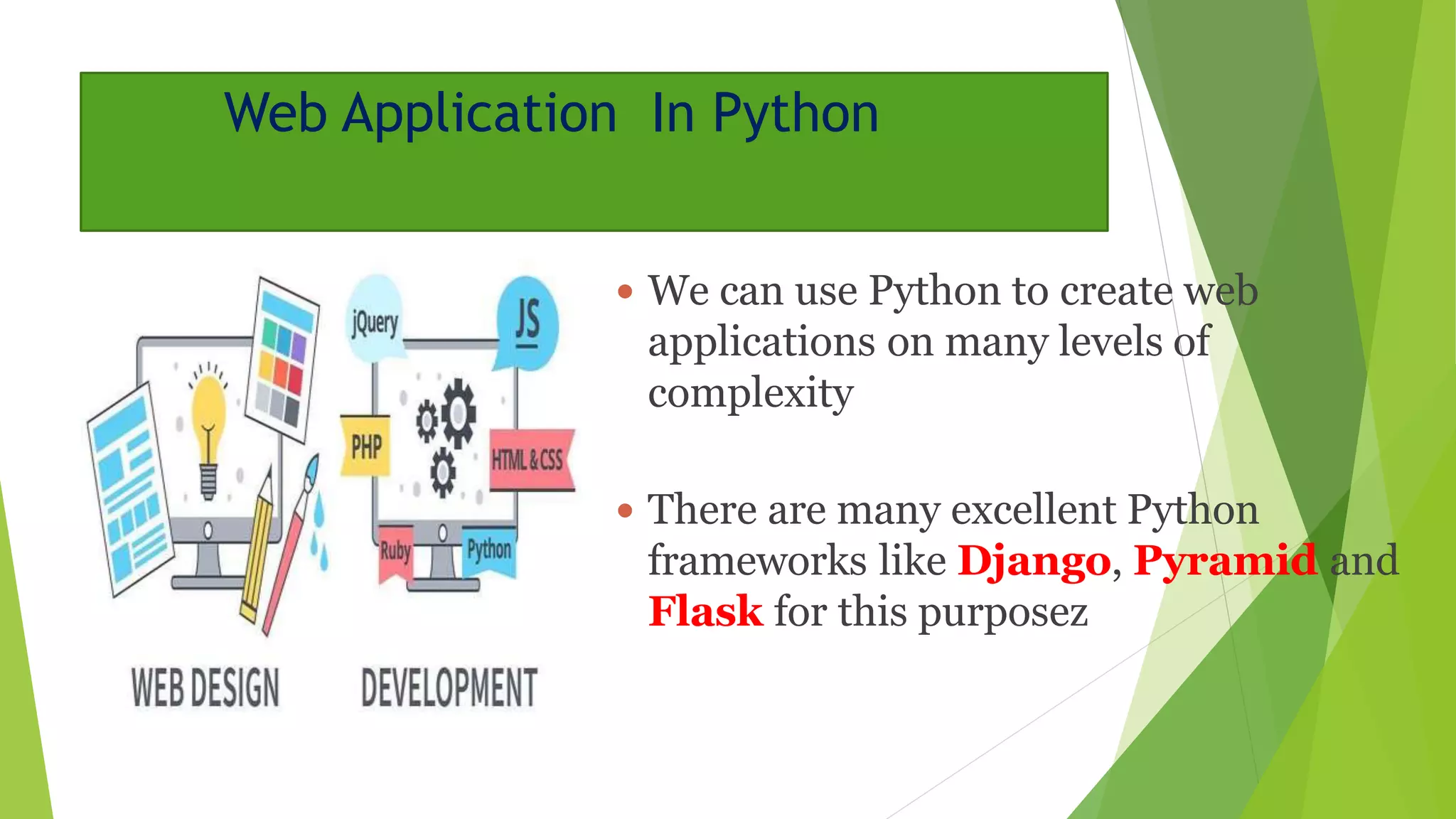
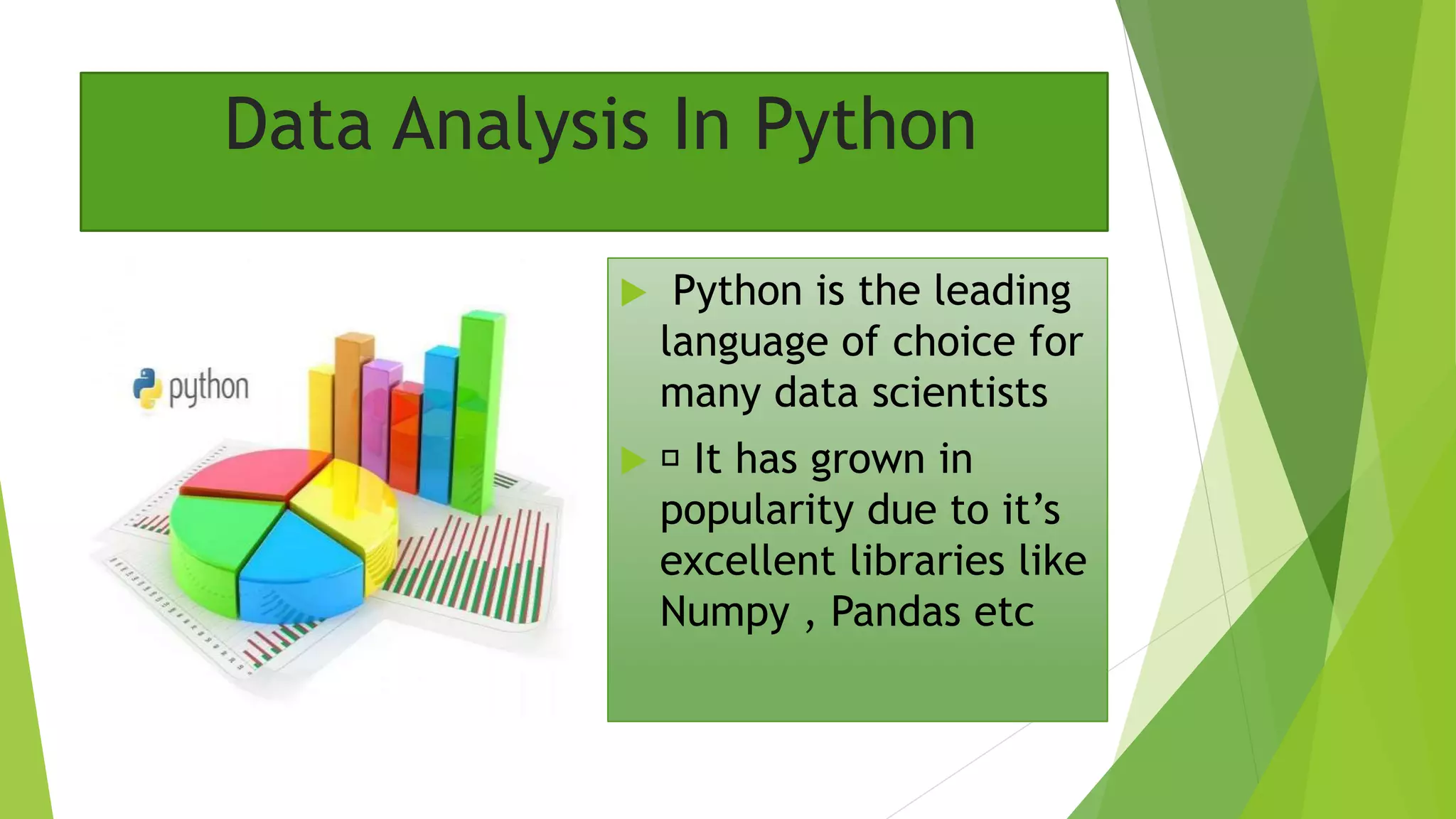
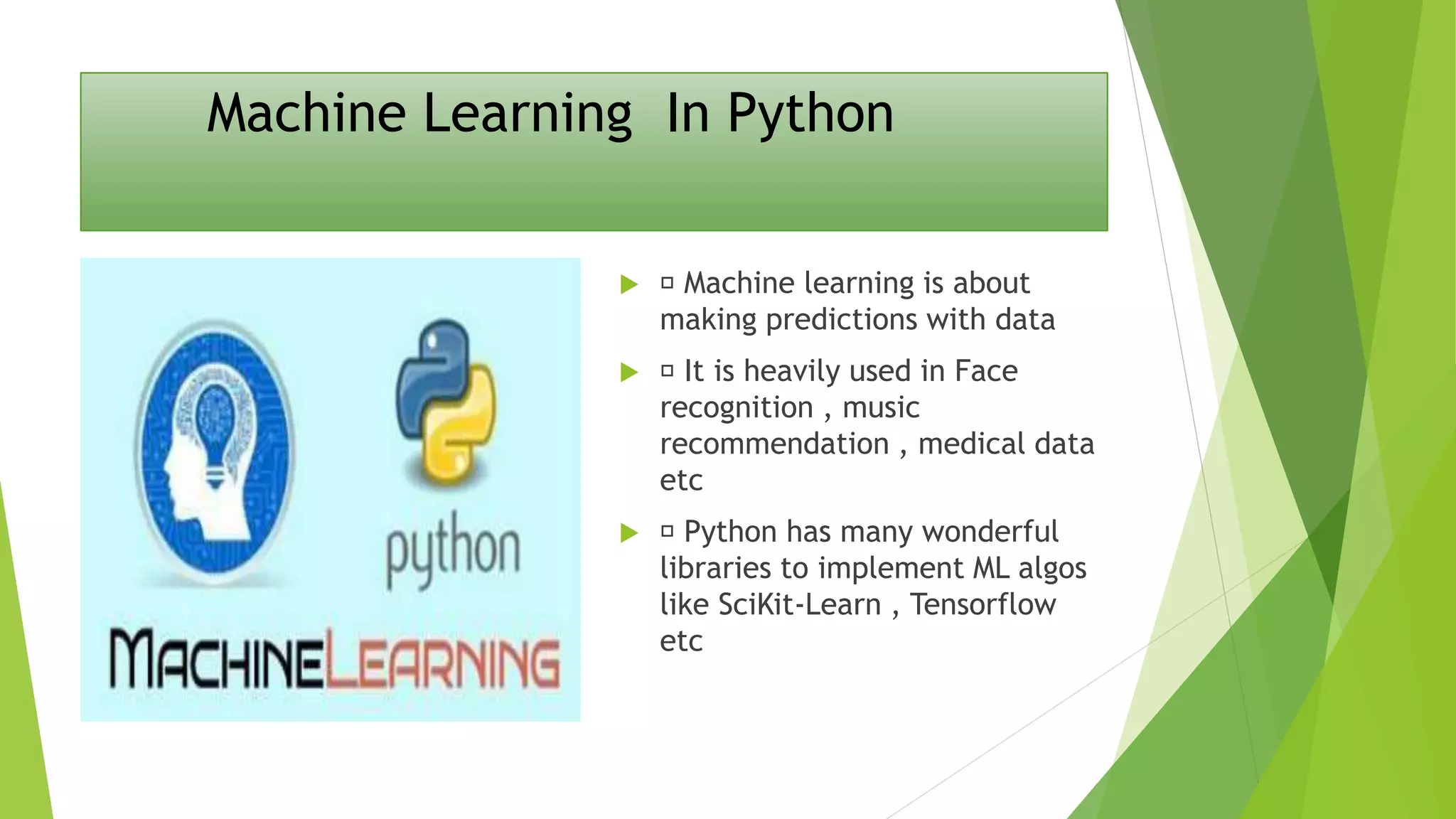
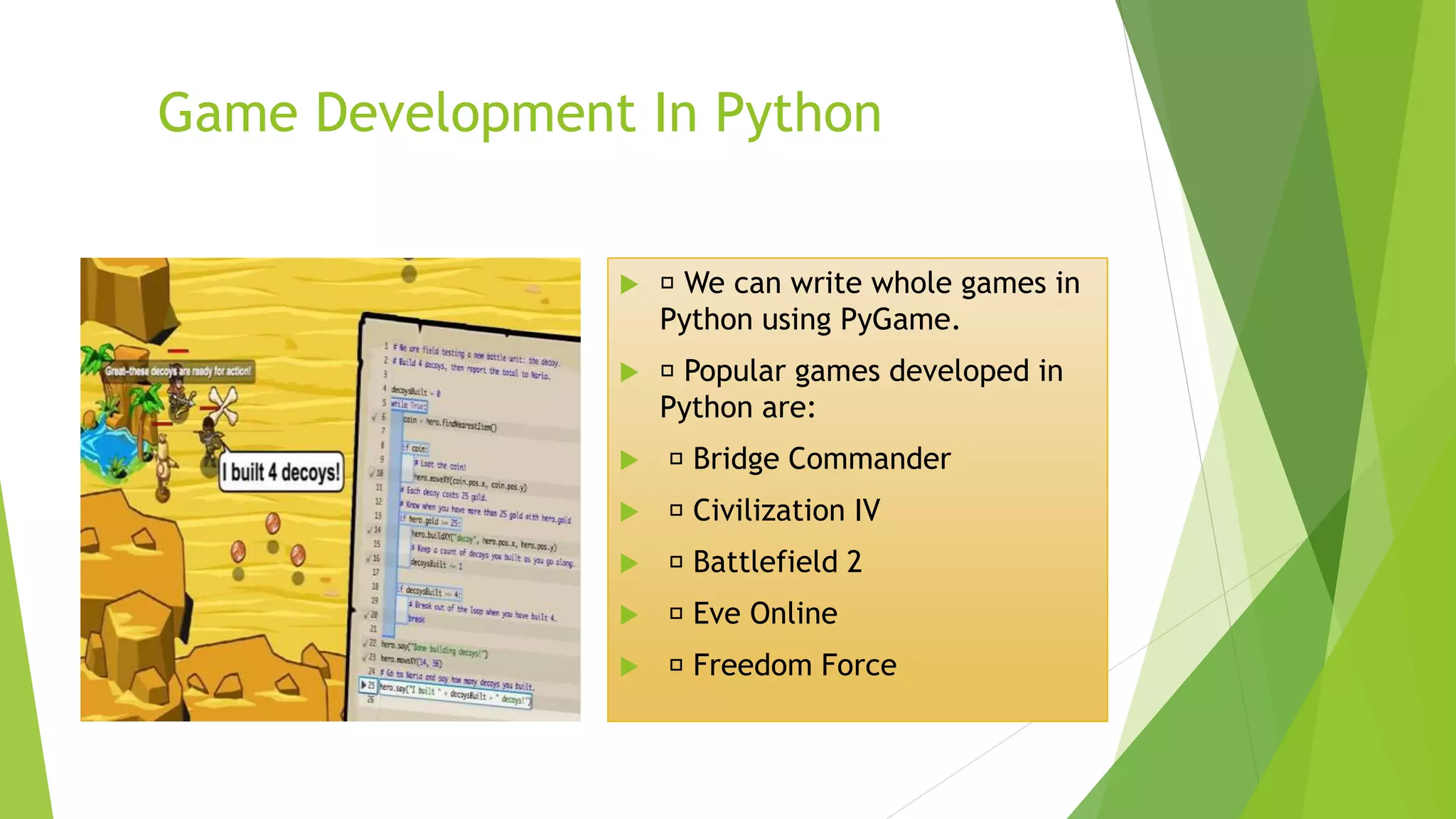
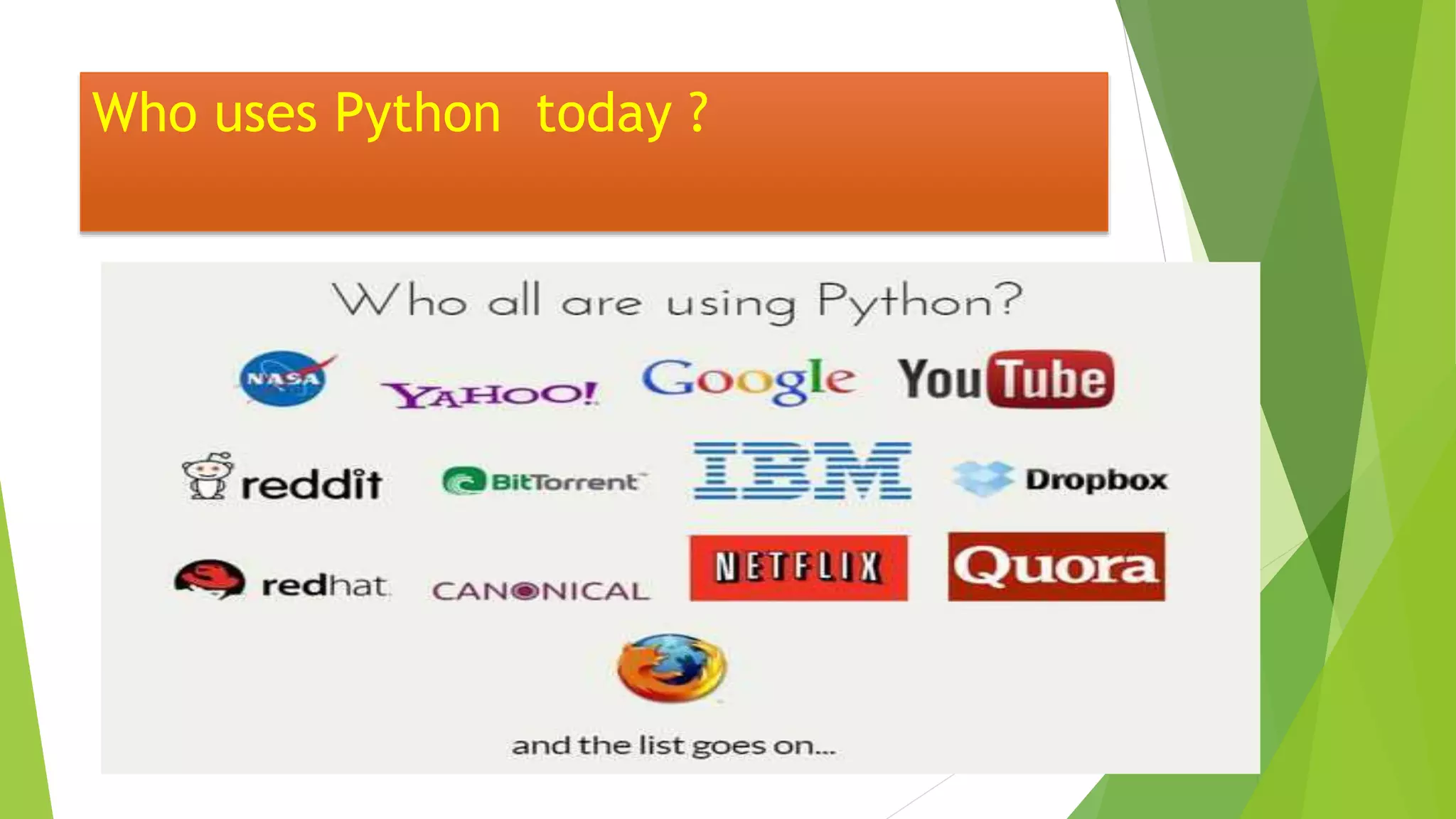
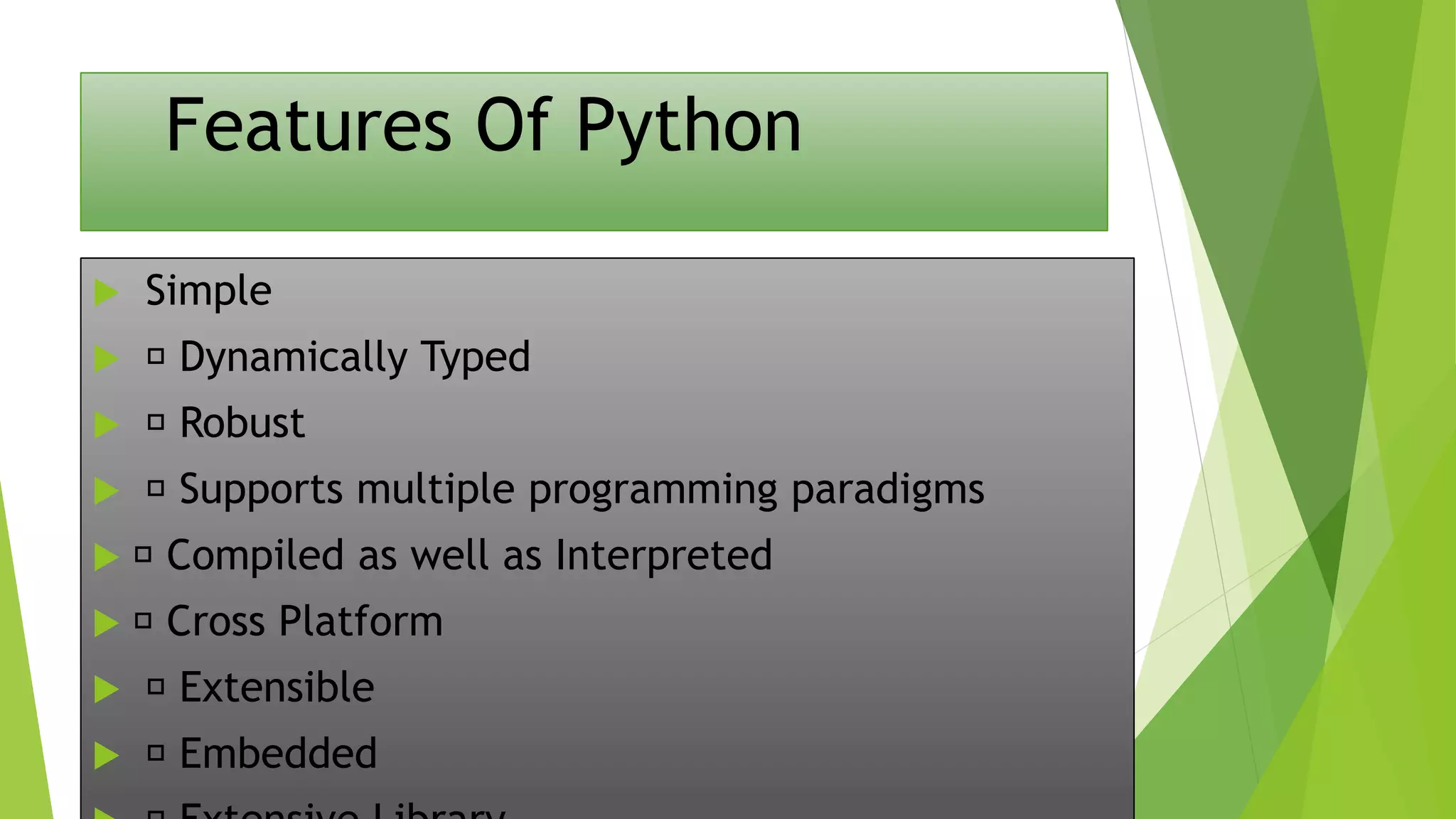
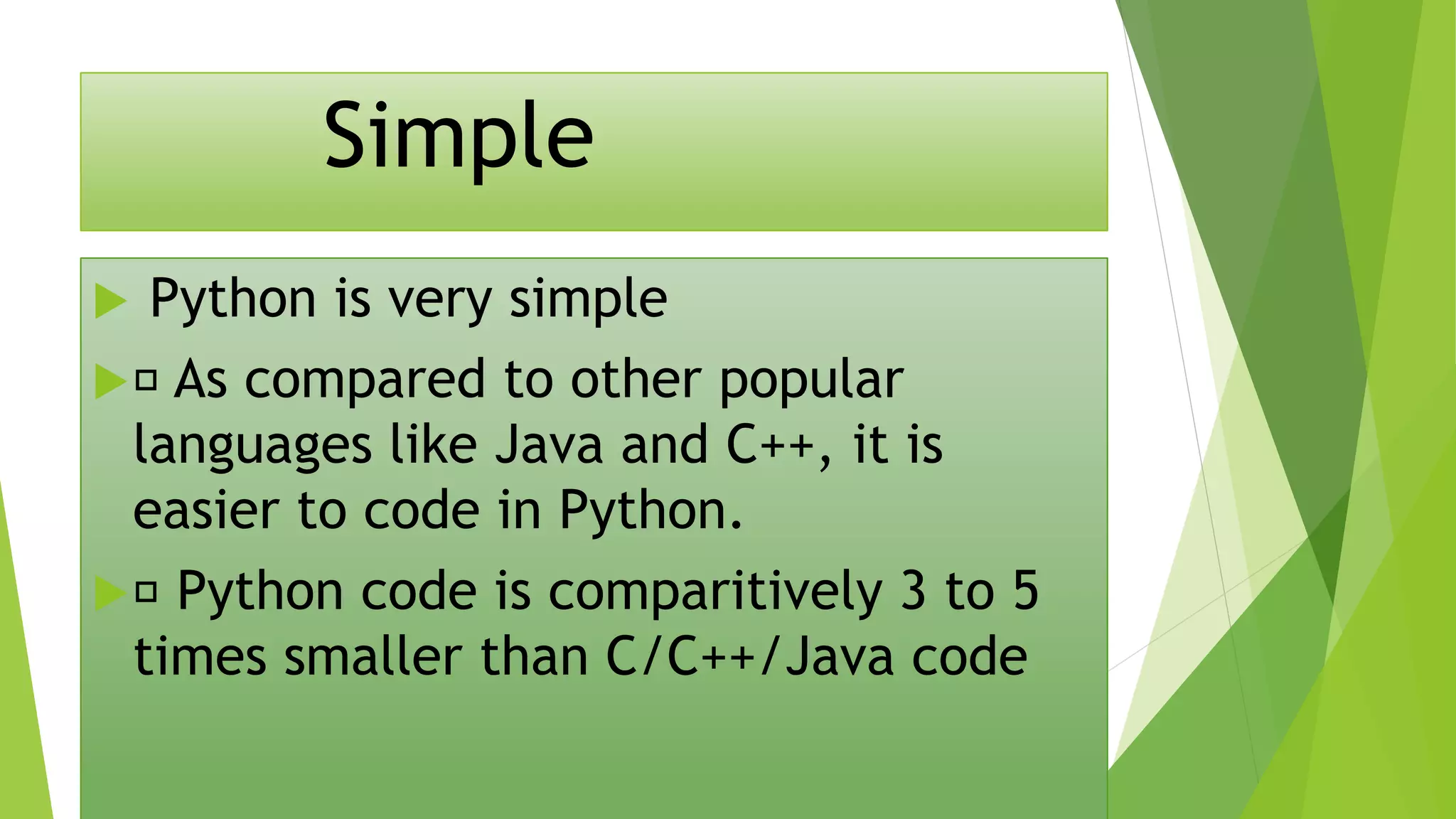
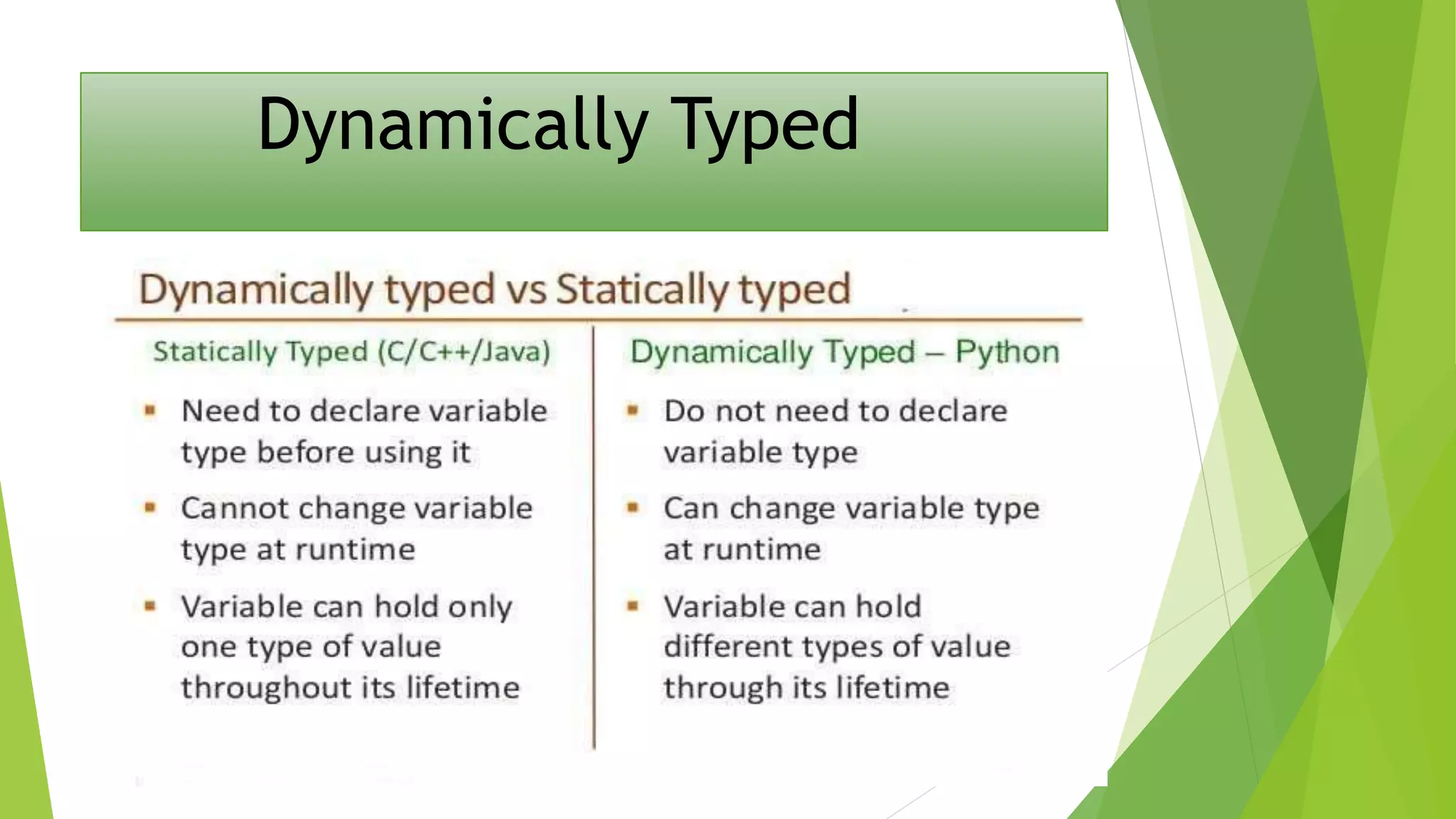
![Robust Python has very strict rules which every program must compulsorily follow and if these rules are violated then Python terminates the code by generating “Exception” To understand python’s robustness , guess the output of the following /C++ code: int arr[5]; int i; for(i=0;i<=9;i++) { arr[i]=i+1; }](https://image.slidesharecdn.com/subhamspython-181101204034/75/POWER-OF-PYTHON-PROGRAMMING-LANGUAGE-18-2048.jpg)
